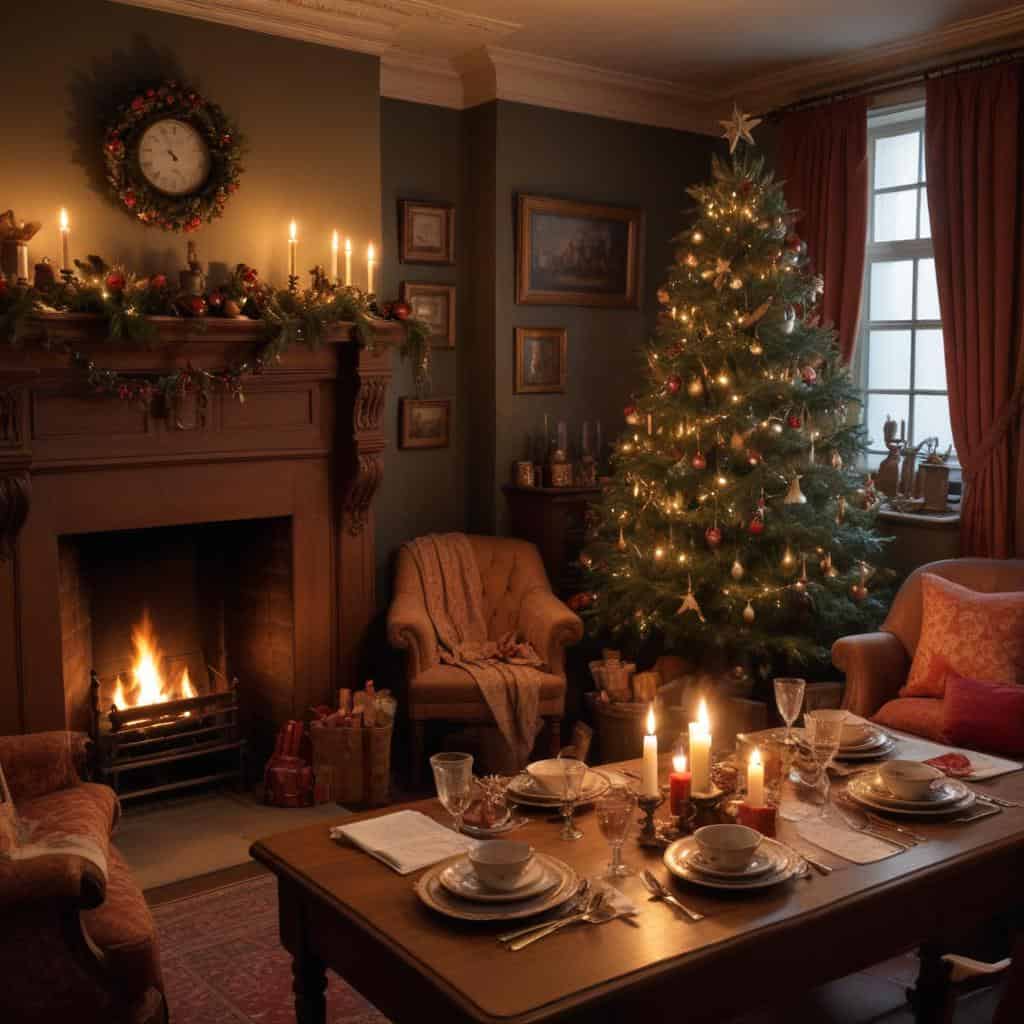Christmas is a beloved holiday celebrated by millions around the world every year. But did you know that many of the traditions we associate with Christmas today actually have their roots in ancient customs and rituals? In this listicle, we will explore 7 ancient traditions that have shaped modern Christmas celebrations.
So grab a cup of hot cocoa and get ready to dive into the fascinating history of Christmas. From the lighting of candles to the singing of carols, each tradition has a story to tell. Let’s take a journey through time and discover how these ancient customs have influenced the way we celebrate Christmas today.
List of Christmas Traditions
Ancient Roman Saturnalia Festival
The Roman festival of Saturnalia, held in mid-December, was a time of feasting, gift-giving, and revelry in honor of the god Saturn. It was a time when social norms were temporarily overturned, with masters serving their slaves, and gambling and drinking were common. Some of these traditions, such as feasting and gift-giving, were later incorporated into Christmas celebrations.
Germanic Yule Celebrations
The Germanic peoples celebrated the winter solstice with the festival of Yule, which involved feasting, drinking, and honoring the Norse god Odin. Yule logs were burned as a symbol of the returning sun, and evergreen boughs were used to decorate homes. Many of these customs, including the use of evergreen decorations, were adopted into Christmas traditions.
Ancient Scandinavian Feast of Juul
In Scandinavia, the Feast of Juul was a midwinter celebration that involved sacrificing animals to the gods for a prosperous new year. Feasting and drinking were common, and a large log was burned in honor of the god Thor. Some elements of this festival, such as feasting and bonfires, can be seen in modern Christmas celebrations.
Ancient Celtic Winter Solstice Celebrations
The ancient Celts celebrated the winter solstice with feasting, drinking, and lighting bonfires to ward off evil spirits. It was a time to gather with loved ones and celebrate the sun’s return. Some of these traditions, such as lighting candles and gathering with family, have been incorporated into modern Christmas celebrations.
Medieval Christian Nativity Plays
In medieval Europe, the church began incorporating dramatic reenactments of the Nativity story into Christmas celebrations. These plays, known as Nativity plays, helped to educate the illiterate population about the story of Jesus’ birth. Over time, these plays evolved into the elaborate Christmas pageants and nativity scenes that are still popular today.
Victorian Christmas Traditions
During the Victorian era, Christmas traditions as we know them today began to take shape. Queen Victoria and Prince Albert popularized the Christmas tree, exchanging gifts, and sending Christmas cards. The idea of Christmas as a time for family gatherings and gift-giving became firmly established during this time.
Modern Santa Claus
The modern image of Santa Claus is based on the Dutch figure of Sinterklaas, who was brought to America by Dutch settlers in the 18th century. The Santa Claus we know today, with his red suit, white beard, and flying reindeer, was popularized by the poem “A Visit from St. Nicholas” (commonly known as “‘Twas the Night Before Christmas”) in the 19th century. Today, Santa Claus is a central figure in Christmas celebrations around the world.
Conclusion
By learning about the history of Christmas, we can understand how different cultures have come together to create the holiday traditions we cherish. As we gather with loved ones to exchange gifts, feast on delicious food, and celebrate the spirit of giving, we can reflect on the rich tapestry of customs that have been passed down through generations.
Merry Christmas Everyone!



